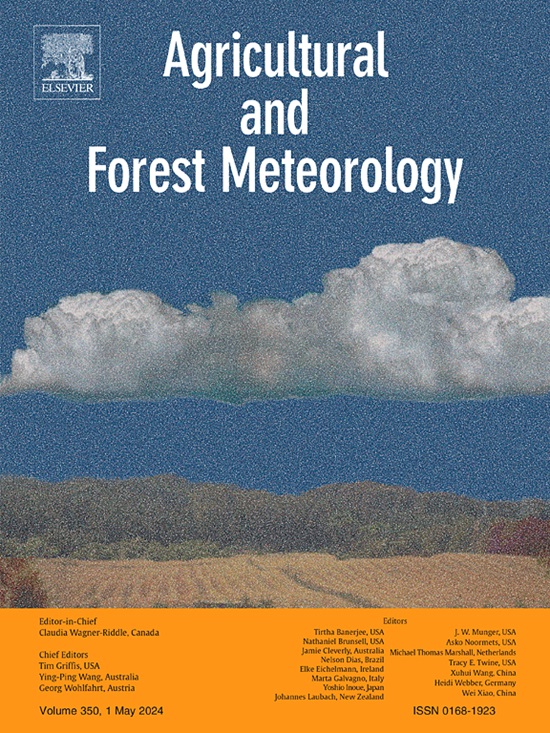Heterogeneous land surface phenology challenges the comparison among PlanetScope, HLS, and VIIRS detections in semi-arid rangelands
IF 5.6
1区 农林科学
Q1 AGRONOMY
引用次数: 0
Abstract
Semi-arid rangelands in the western United States offer crucial ecosystem services and exhibit dynamic responses to climate change. Monitoring land surface phenology (LSP) in semi-arid rangelands using multi-scale satellite observations provides valuable insights to enhance management and sustainability efforts. This study investigates the multi-scale LSP metrics across fine (3 m), moderate (30 m), and coarse (450 m) resolutions, derived from PlanetScope, Harmonized Landsat and Sentinel-2 (HLS), and Visible Infrared Imaging Radiometer Suite (VIIRS). After detecting phenometrics from 3-m PlanetScope data, we analyzed phenological heterogeneity within 30-m and 450-m pixels. We then quantified the influence of land cover fractions (grasses, shrubs, and bare grounds) on phenological heterogeneity. Finally, we assessed the scaling effects and agreements among multi-scale phenometrics under different climate conditions (normal and drought years). Results reveal that the phenological heterogeneity varies significantly across scales, phenometrics, and years, which is particularly higher in senescence phase, coarser pixels, and drought conditions. The heterogeneity is also asymmetrically influenced by the fraction of grasses and shrubs, where grass fraction has a greater impact on greenup onset particularly in the drought year, while shrub fraction is more influential on dormancy onset mostly in the normal year. Because of scaling effects, a phenological event at a coarser pixel is not detectable until the given event has occurred in a certain percentage of finer pixels that is inconsistent among phenometrics and climate conditions. Moreover, the agreement of phenometrics detected from three different scales also varies with phenological events and climate conditions with an average absolute difference ranging from 9 to 31 days. These findings underscore the importance of considering phenological heterogeneity and scaling effects in semi-arid rangelands.
求助全文
约1分钟内获得全文
求助全文
来源期刊
CiteScore
10.30
自引率
9.70%
发文量
415
审稿时长
69 days
期刊介绍:
Agricultural and Forest Meteorology is an international journal for the publication of original articles and reviews on the inter-relationship between meteorology, agriculture, forestry, and natural ecosystems. Emphasis is on basic and applied scientific research relevant to practical problems in the field of plant and soil sciences, ecology and biogeochemistry as affected by weather as well as climate variability and change. Theoretical models should be tested against experimental data. Articles must appeal to an international audience. Special issues devoted to single topics are also published.
Typical topics include canopy micrometeorology (e.g. canopy radiation transfer, turbulence near the ground, evapotranspiration, energy balance, fluxes of trace gases), micrometeorological instrumentation (e.g., sensors for trace gases, flux measurement instruments, radiation measurement techniques), aerobiology (e.g. the dispersion of pollen, spores, insects and pesticides), biometeorology (e.g. the effect of weather and climate on plant distribution, crop yield, water-use efficiency, and plant phenology), forest-fire/weather interactions, and feedbacks from vegetation to weather and the climate system.

 求助内容:
求助内容: 应助结果提醒方式:
应助结果提醒方式:


